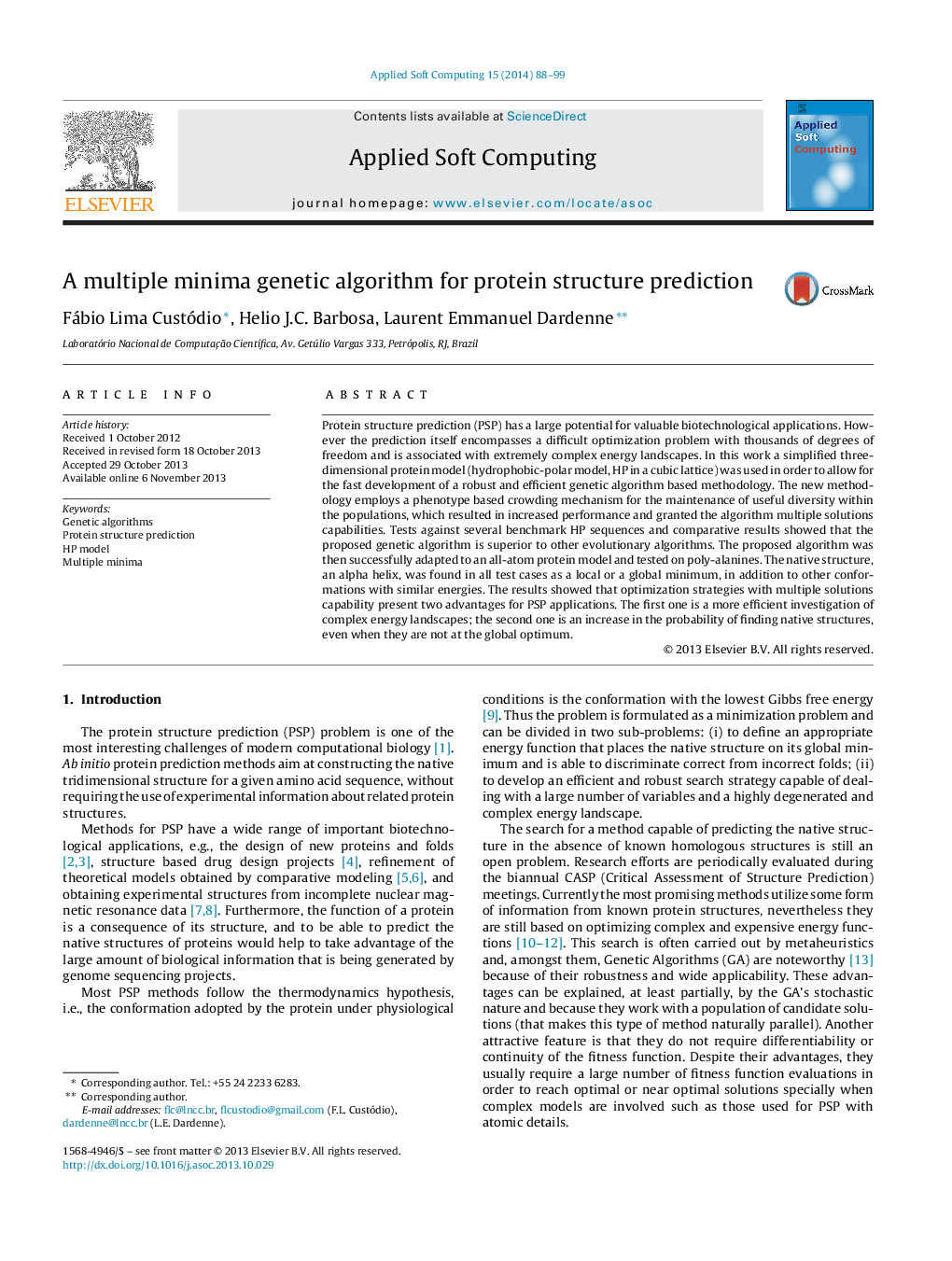| کد مقاله | کد نشریه | سال انتشار | مقاله انگلیسی | نسخه تمام متن |
|---|---|---|---|---|
| 495502 | 862828 | 2014 | 12 صفحه PDF | دانلود رایگان |
• A multiple minima genetic algorithm is proposed for protein structure prediction.
• Multiple minima capability is achieved thorough a phenotype based crowding scheme.
• The GA was developed under the HP model and later adapted to an all-atom model.
• Results for the HP benchmark sequences surpass other evolutionary algorithms.
• Under the atomistic model the GA was able to locate global minimum structures.
Protein structure prediction (PSP) has a large potential for valuable biotechnological applications. However the prediction itself encompasses a difficult optimization problem with thousands of degrees of freedom and is associated with extremely complex energy landscapes. In this work a simplified three-dimensional protein model (hydrophobic-polar model, HP in a cubic lattice) was used in order to allow for the fast development of a robust and efficient genetic algorithm based methodology. The new methodology employs a phenotype based crowding mechanism for the maintenance of useful diversity within the populations, which resulted in increased performance and granted the algorithm multiple solutions capabilities. Tests against several benchmark HP sequences and comparative results showed that the proposed genetic algorithm is superior to other evolutionary algorithms. The proposed algorithm was then successfully adapted to an all-atom protein model and tested on poly-alanines. The native structure, an alpha helix, was found in all test cases as a local or a global minimum, in addition to other conformations with similar energies. The results showed that optimization strategies with multiple solutions capability present two advantages for PSP applications. The first one is a more efficient investigation of complex energy landscapes; the second one is an increase in the probability of finding native structures, even when they are not at the global optimum.
Figure optionsDownload as PowerPoint slide
Journal: Applied Soft Computing - Volume 15, February 2014, Pages 88–99
